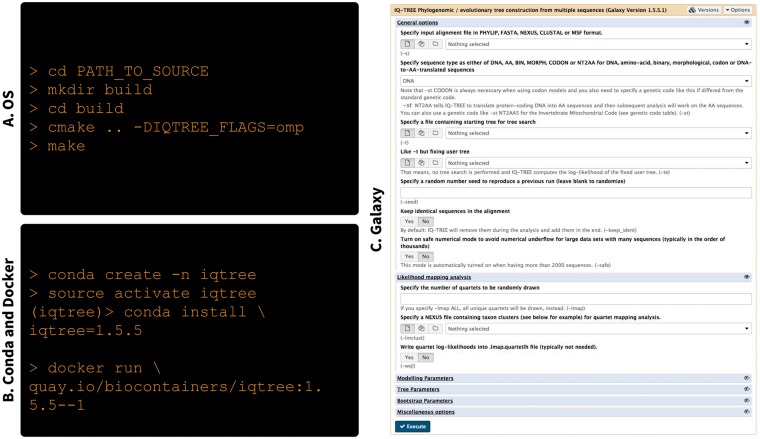Fig. 1.
Examples of different deployment strategies for a single tool IQ-Tree (Nguyen et al. 2015). (A) Compiling from the source code on Linux (installation instruction specific to MacOS and Windows are described in IQ-Tree website). These instruction do not include installation of compiler and cmake as well as environment configuration (e.g., PATH variable). (B) Because IQ-Tree is available from Bioconda (https://bioconda.github.io/recipes/iqtree, last accessed March 2018) is can be installed with much less effort. Here we first create an isolated virtual environment (conda create), switch to that environment (source activate), and finally install IQ-Tree itself (conda install). In contrast to (A) this takes care of all dependencies and environment configuration making the package immediately ready for use. Because Bioconda automatically creates containers the tool can be run from within a container (docker run). Note that in these cases (Conda and Docker) we explicitly specify version of IQ-Tree (1.5.5). Ability of specify software versions is essential for making analyses transparent and reproducible. (C) Finally, because IQ-Tree is already in Conda it is trivial to incorporate it into Galaxy—an integrative environment (this screenshot is from http://usegalaxy.eu, last accessed March 2018). This provides users with a consistent interface and ability to combine IQ-Tree with other tools within a Galaxy such as, for example, tools for generation of multiple alignments.

